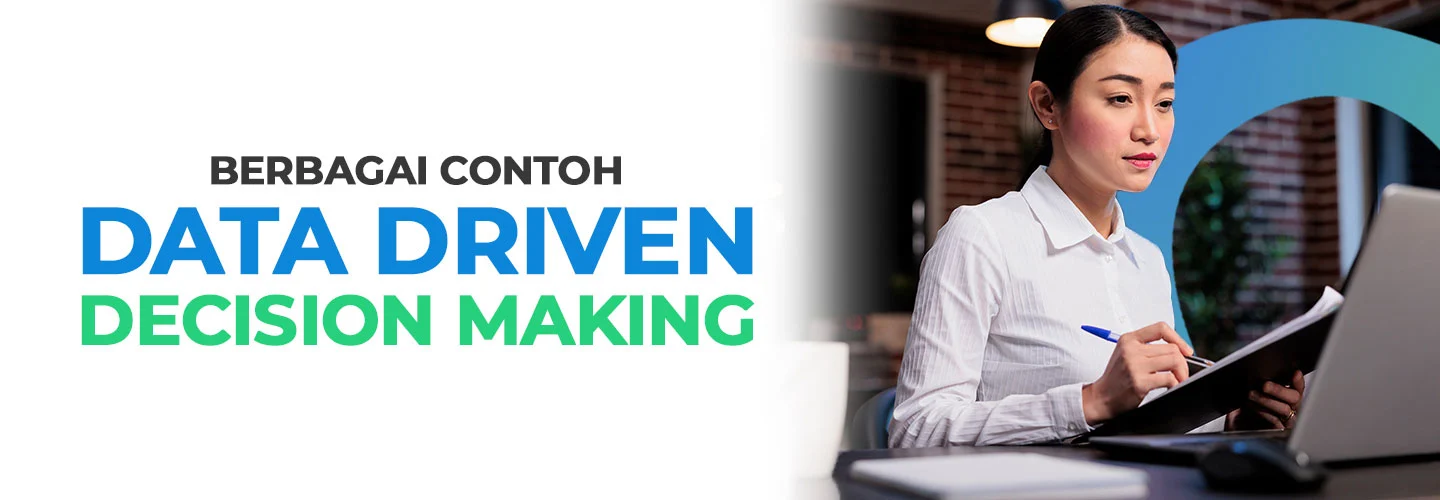Data Driven Decision Making: How to Make Decisions Without Bias

In business, you don't just use feelings and logic in making decisions. Data driven decision making is needed.
In making decisions, you must know the risks and data related to the audience or consumer. The goal is to avoid misinterpretation of consumer needs or expectations of your product.
Therefore, learn about data driven decision making from various benefits, the process of doing it, to examples of its application.
What is Data Driven Decision Making?
Data driven decision making is the process of collecting data based on company performance, usually KPIs, and processing the data into a business strategy. This process is a crucial element in modern business strategy.
Consumer data, ranging from demographics (location, age, gender), shopping habits, internet trends, to needs, is the main information in this decision-making process.
Quoting Asana, there are various ways that can be done to carry out data driven decision making, including:
- surveys
- direct contact via social media DM or company email
- gathering loyal consumers in special events to interact
Through this process, businesses also avoid bias or hasty decisions. Ultimately, data driven decision making helps your business achieve its goals or targets and create a roadmap or consumer purchasing process through data and concrete evidence.
Benefits of Data Driven Decision Making
Some of the benefits of data driven decision making for your business include:
- Making decisions with confidence.
- Avoiding bias in decisions.
- Answering consumer-related questions.
- Helping businesses create measurable targets or goals.
- Improving business processes and operations.
- Critical decisions help businesses grow.
- Increasing customer satisfaction with decisions that suit their needs.
- Reaching new consumers to understand their expectations or how they use your product.
- Can be used for external and internal decisions (employee interests).
Risks of Data Driven Decision Making
- Data driven decision making also has several risks that must be considered, such as:
- The quality and accuracy of data collected or provided by consumers.
- The amount of data is too little because consumers feel your survey is not important.
- Data has the potential to be leaked or stolen if not properly maintained.
- Major impact and negative bias on the company's internal due to new processes.
Data Driven Decision Making Process
According to Drive Research, here are 5 steps and processes for conducting data driven decision making:
Determine the objective
Make sure the objective and target of the business research or survey are clear and agreed upon by all parties. From there, make sure the mindset of the entire team involved is the same so that the survey can run smoothly.
Some important factors besides objectives that must also be considered are:
- Target audience or consumers.
- Timeline (when the survey is opened, closed, and started to be processed).
- Survey method
- Reporting needs from each team.
- Additional questions related to the survey as a whole.
Prepare survey questions
The next step is to prepare survey questions that will be sent to the audience and consumers (responded). Use an online survey platform to reach a wide range of consumers and from various locations.
Some recommendations related to your survey:
- Make sure the survey is not too long: usually online surveys take less than 20 minutes to fill out. Even ideally, 15 minutes is the maximum time so that consumers don't get bored.
- Use different question styles: the diversity of audiences and consumers must be considered, make sure you prepare diverse questions for different groups of respondents.
Once everything is ready, send your survey!
Collect and process survey data
Adjust to the survey timeline and number of respondents to know when the survey should be closed. If you feel you still need more answers, you should open the survey longer. However, make sure it is no more than 2 weeks from the approved timeline.
After the data is collected, the next process is data processing. This means entering data into the application or data tools until dividing it into certain groups according to your survey objectives. This process will help the data analysis process.
Analyze data
Analyze data using the method that was determined at the beginning. Analyze all existing data or based on its group. The result of the analysis is a survey report that usually contains:
- Analysis of the survey method used.
- Analyze data and its relationship to the main theme.
- Add context to the analysis, if necessary.
- Show the input or opinions of respondents that best suit your questions and products.
- Create a budget and decisions to be made.
Make decisions
To make decisions, you can use each of the analysis results mentioned above. Don't forget to also add a budget if necessary, for example for product update costs to making new products.
Example of Data Driven Decision Making
In e-commerce business
When shopping in an e-commerce application or site, have you ever seen the recommended product section? You must have found similar or related items to products you have purchased before.
This is a form of data driven decision making through data such as customer journey, number of clicks on products, and your habits.
In the transportation business
Online transportation also uses data such as how often you use their services per day or per week, and also the distance you travel to reach your destination.
This data is included in data driven decision making to provide recommendations for your discount coupon package program.
When making decisions, business actors must use data driven decision making to avoid bias to decisions without strong supporting evidence. Do the process above to start practicing it.
However, if you are still in doubt and want to understand data driven decision making further, then you can take a short program from Prasmul-Eli entitled System Thinking and Complex Decision Making.
In this short program, you will meet professionals and experts who use data in making decisions. This can improve the quality of your decision making.
Interested? Visit this page for a list of programs!


